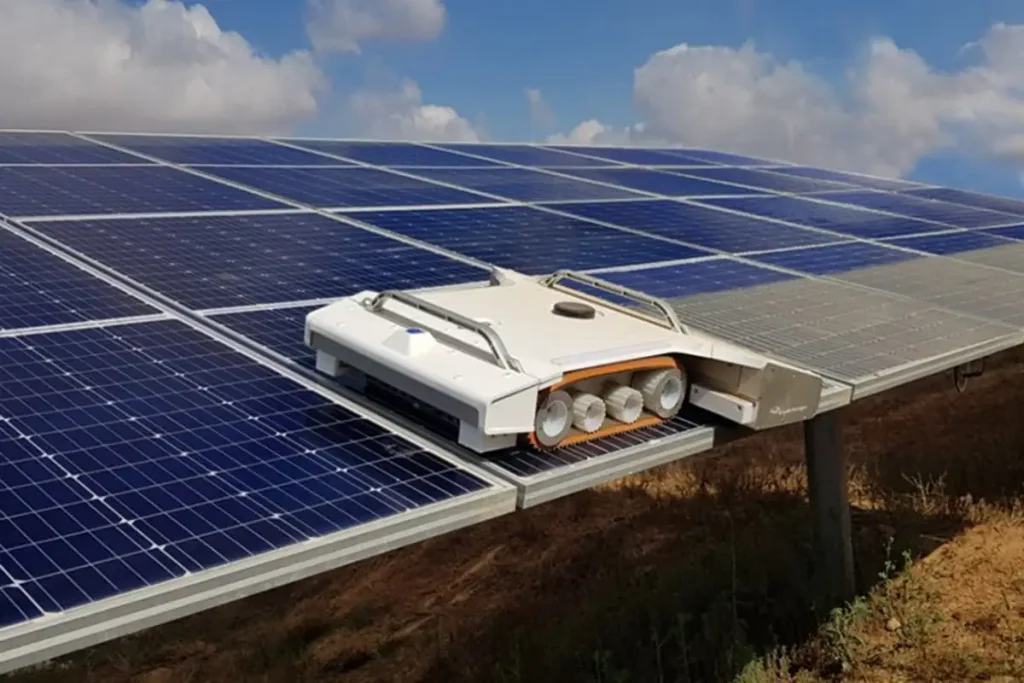As solar energy becomes an increasingly vital part of the global energy mix, maintaining the efficiency of solar panels has become a significant concern. One innovative solution to this challenge is the development of solar panel cleaning robots. These robots are designed to keep solar panels free from dust, debris, and other contaminants that can reduce their efficiency. This article explores the design, benefits, and future prospects of solar panel cleaning robots.
Design and Technology
Solar panel cleaning robots are engineered to operate autonomously, navigating across the surface of solar panels to remove dirt and debris. The design of these robots varies, but most share common features such as brushes, squeegees, and even air blowers. Some advanced models incorporate sensors and cameras to detect the level of dirt and optimize the cleaning process.
For instance, an automatic solar panel cleaner developed by researchers uses an Arduino microcontroller to automate the cleaning process (source). This system can be programmed to clean the panels at specific intervals or in response to sensor data indicating a drop in efficiency due to dirt accumulation.
Another innovative approach involves the use of IoT (Internet of Things) technology, enabling users to control and monitor the cleaning robots via a mobile application (source). This integration allows for real-time adjustments and monitoring, ensuring that the panels are cleaned as needed without manual intervention.
Benefits and Efficiency
The primary benefit of solar panel cleaning robots is the maintenance of optimal efficiency in solar energy systems. Dust and dirt can significantly reduce the energy output of solar panels, sometimes by as much as 20% or more. Regular cleaning ensures that the panels operate at their maximum capacity, leading to higher energy yields and better return on investment.
Moreover, these robots offer a cost-effective solution to the labor-intensive task of manual cleaning, especially in large solar farms. Automated cleaning systems can operate continuously and require minimal human oversight, reducing labor costs and the risk of damage to the panels.
A study on the shading effects created by cleaning robots in solar farms found that while there is a minimal reduction in efficiency due to shading, the overall benefits of regular cleaning far outweigh this minor drawback (source). This balance is crucial for maintaining the long-term viability and profitability of solar installations.
Future Prospects and Innovations
The future of solar panel cleaning robots looks promising, with ongoing research and development aimed at enhancing their efficiency and functionality. One exciting area of innovation is the development of waterless cleaning methods. In water-scarce regions, traditional cleaning methods that rely on water can be impractical. Researchers at MIT have developed a waterless cleaning technology that uses electrostatic repulsion to remove dust from solar panels (source). This method not only conserves water but also reduces the operational costs associated with water-based cleaning systems.
Another promising development is the integration of AI and machine learning algorithms to improve the autonomy and decision-making capabilities of cleaning robots. These technologies can enable robots to learn from their environment, optimize their cleaning routes, and even predict the best times to clean based on weather conditions and dust accumulation patterns.
In conclusion, solar panel cleaning robots represent a significant advancement in the maintenance of solar energy systems. Their ability to maintain panel efficiency, reduce labor costs, and operate autonomously makes them an invaluable asset in the renewable energy sector. As technology continues to evolve, we can expect even more efficient, cost-effective, and environmentally friendly solutions to emerge, further solidifying the role of solar energy in our sustainable future.



